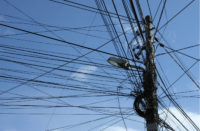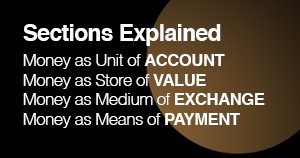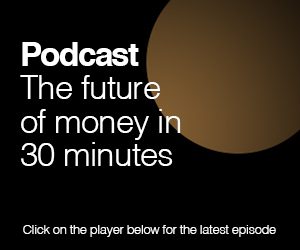For its supporters, bitcoin is digital gold, providing an immutable historical record of financial transactions. For goldbugs, nothing beats the scarcity and durability of the yellow metal. Now a new investment product aims to combine the main selling points of both assets.
This week a consortium led by CoinShares, a London-based digital asset manager, launched DGLD, a digital asset representing allocated physical gold stored in a Swiss vault. DGLD has over $20m in gold at launch.
The other members of the consortium are MKS SA, a Swiss precious metals firm, and Blockchain, a provider of wallets, trading and research for cryptocurrencies and other digital assets.
A key feature of the new product is the use of the bitcoin network to attest to the gold held in custody on behalf of DGLD investors. This, says DGLD, dramatically reduces the settlement period, and the associated settlement risks, for transactions in gold.
For an investor buying gold bullion directly from a dealer, says DGLD, settlement typically takes place from two to five days after the trade date. In gold tracker products, such as gold exchange-traded funds (ETFs), settlement is typically two days after the trade date.
But DGLD says its settlement of a client’s transactions in the new digital token is near-instant. This can be achieved, the firm says, by linking client transactions in DGLD to the bitcoin network.
Bitcoin’s open-source database provides proof that transactions happened in a certain order.
New bitcoin ‘blocks’–files of transaction data–are minted around every ten minutes on average. And the the security of the whole system is underpinned by a massive collective spend on electrical energy from so-called miners, who compete to earn monetary rewards in the form of new bitcoins and transaction fees.
Bitcoin’s energy consumption is now estimated at 73 terawatt (million million watt) hours a year, equivalent to the energy requirements of the whole of Austria.
“You’d have to put a hole in the ozone layer to rewrite that blockchain”
Nicholas Gregory, chief executive of CommerceBlock, which has built the link between DGLD’s ownership records and bitcoin’s public database, explained how the system works.
“We have built a private sidechain, which is owned and operated by DGLD,” said Gregory.
“Every hour, we take a copy of our blocks, we generate a hash and we write it into the bitcoin blockchain,” he said.
A hash function is a mathematical operation that’s easy to perform in one direction, but effectively impossible to reverse.
“If you own DGLD in your local wallet, you can then see that your transaction has been baked into the bitcoin blockchain, which is the most secure network in the world. You’d have to put a hole in the ozone layer to rewrite that blockchain,” said Gregory.
Danny Masters, chairman of CoinShares, said: “DGLD combines the stability of the world’s most enduring asset, gold, with the security of the world’s most resilient network, bitcoin. You can now have the peace of mind of Swiss vaulted physical gold, with the same convenience, but not the same layers of middlemen, as owning a gold ETF.”
Gold ETFs rely on published bar lists to provide assurance to investors that the bullion they hold is actually there. During gold ETFs’ creation and redemption process, some gold passes temporarily out of the most secure form of custody—allocated metal—and into the hands of dealers, where investors’ gold ownership rights are less secure.
The physical gold represented by DGLD in circulation will be stored at the MKS PAMP vaulting facility in Castel San Pietro, Switzerland.
DGLD has also appointed a digital custodian, Globacap, to act as an intermediary for institutional investors who have to appoint an external entity for the safekeeping of client assets.
Global Advisors, a Jersey-based company, is the owner of CoinShares. Global Advisors is also an equity investor in both CommerceBlock and Globacap.
Although DGLD claims its settlement mechanism is more efficient than gold ETFs, owning gold via DGLD will be more expensive. DGLD charges a 1 percent annual management fee, whereas the world’s most popular gold ETF, SPDR Gold Shares, charges 0.4 percent a year.
DGLD will also charge a transaction fee of 0.0005 DGLD for each transfer of the token, plus a redemption fee for anyone wanting to redeem their token and take physical delivery of the precious metal.
Initially, trading in DGLD will take place exclusively on the PIT, a cryptoasset exchange launched by Blockchain in July. The PIT is available to users in more than 200 countries and allows deposits, withdrawals, and fiat-to-crypto trading in US dollars, euros and pounds sterling.
Don’t miss any more New Money Review content: sign up here for our newsletter
Support New Money Review on Patreon or in cryptocurrency









